|
|
|
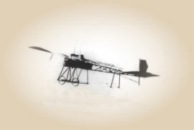
|
|
Trieste 6.7.1886 - Belgrade 9.1.1911 |
| The photos published on this site are copyrighted and can not be used for profit. Those wishing to reproduce them in a network are asked to introduce application to the author, the granddaughter Grace Rusjan, e-mail: palpersempre@gmail.com |
|
|
|

|
| Eduardo RUSJAN is born the July 6th of 1886 in Trieste where his father established few years before. Both Eduardo Rusjan parents were Austrian citizen but of Slovenian ethnic, the father, and Italian ethnic, the mother. In those years, Slovenia didn't exist yet. This region was still part of the Austro-Hungarian Empire. |
 |
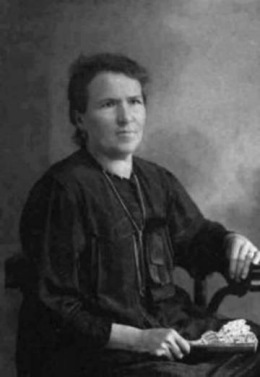 |
 |
|
|
|
| When the family
transferred in Gorizia, Eduardo’s father implanted a laboratory in which
all the family was working in barrel's production.
Eduardo Rusjan was fond of a new sport, the cycling, and in the 1905 a new passion interested him: the "Aviation". He started reading and experimenting the new matter. In 1908, using the family carpentry, with the brother Giuseppe (Pepi) cooperation, he assembled a glider made of bamboo sticks and thin cloth. He ironically called it "Trapola de carta" (paper trap). With the same ironic spirit, he wrote on the workshop wall "Fabrique technique d’aéroplans Rusjan". |
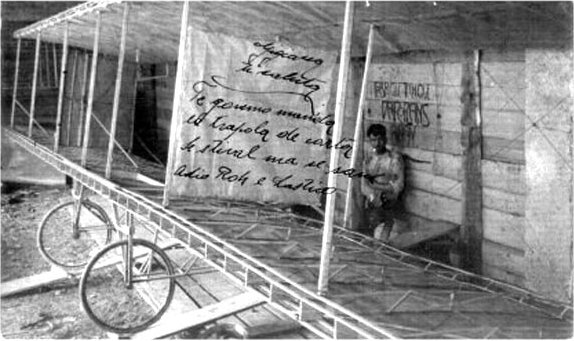 |
| The "Trapola de carta" (paper stuff) is the first of a long series of projects carried out by the Rusjan brothers. In the picture the engine is not yet installed. Note the sign on the wall: "FABRIQUE TECHNIQUE d'AEROPLANS RUSJAN" (1908) |
 |
|
|
 |
| Giuseppe and Eduardo replacing the propeller of EDA I (1909) |
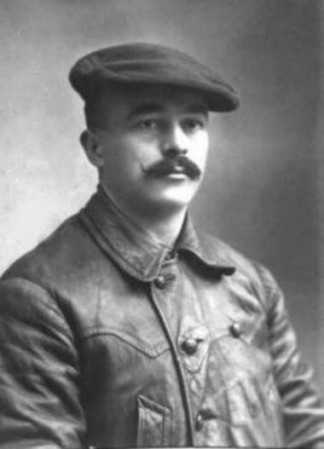 |
|
|
| Eduardo realized
that, installing an engine on the glider frame, he could obtain a good
performance plane.
The 8th and 9th of September of 1909, he took part to a pioneer's meeting in Montichiari, by Brescia and bought an 25 HP Anzani engine, the same used by Louis Blériot during the Channel crossing, four months before; he will adopt this engine for next seven prototype. The 1909 is an important year in the history of Aviation: the practical use of this new invention, the aeroplane, became evident. Rewards and contests promote the experiments. After the first flight of Wright brothers, that solved some of the problems about the lateral and longitudinal stability, the race to distance and height record started around the world. In the same time, the Rusjan brothers started their experiments. |
 |
| The prototype of the EDA I with its forward and rear rudder. In the next models, the forward rudder is not present (1909) |
| Their "EDA I", one long biplane 12 meters and with 8 meters of wing span, fly for before turn 25 November 1909: it completes a leap of 60 meters, to a constant height of 2 meters, on the field ones of the Campagnuzza. Some day after, 29 November, completes a flight of 600 meters. |
 |
| The EDA I. During the first flight in 1909 over “Campagnuzza” (small meadow). The EDA I climbed up to 2 meters and ran for 60 meters. Few days later it reached a height of 12 meters and a distance of 600 meters. After these two flights, all the Rusjan’s tests were transferred over a field called “Campagna Grande” (great meadow) by Merna. In the picture the brothers continued working on their project in a small rented shed |
| It would seem little thing, of forehead to turns out to you caught up already in the USA and France, but the brothers Rusjan, that they are at the same time planners, constructors and pilots, have not approached the licences of the Wright neither arrange of the resources financial institutions of Blériot. Four days after, in a second series of tests, come caught up the 12 meters of height. |
 |
| End of 1909, Rusjan brothers are working on the second EDA prototype. In the photo: Eduardo (Edi) bending the knees – Giuseppe (Pepi) far to the right - Luisa (Gigia) in the plane - Anita the senior sister - Antonio (Tunin) the junior brother, on Eduardo's shoulders - the parents Franc and Grazia, to the far left |
 |
| The EDA II, a the triplane with rear engine to improve the stability (1909) |
| The triplane EDA II had the rudders beside the wings and the motor behind. Airplane EDA III and probably also EDA IV were the biplanes developed from the EDA I. After that the two brothers begin the construction of monoplanes. The flight of EDA II is concluded with one fallen and the destruction of the airplane. Eduardo remains unharmed. |
 |
| The EDA II crashed on ground. Eduardo escaped the accident and is sitting for a picture (1910) |
| One of the sisters, Luisa, always accompanies them to the tests in charge to sew the burlap on the wings of the aircrafts! |
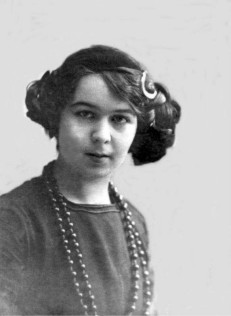 |
| Luigia Rusjan, one of Eduardo' sisters, sewing the cloth on the wings |
| The brothers Rusjan throw in one frenzies activity. In the first six months of 1910, they construct others six aircrafts using every turns the same motor. |
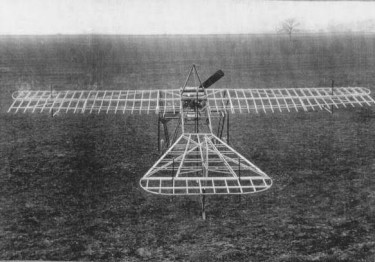 |
 |
|
|
|
| They transfer moreover their laboratory of the house courtyard, from road Cappella number 8, to a shed of Merna, more near to the fields ones that they use for the tests and the public exhibitions and on which a pair of years after will find space the airport of Gorizia. EDA V is with the EDA VI, the only airplane to exceed all the flight tests. After to have carried out some promising tests, Eduardo attempts 28 March 1910 in one first aerial manifestation. |
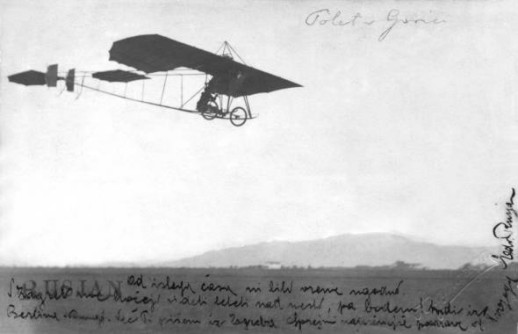 |
| The EDA V. This monoplane proved the best performances. In 2000, a modern reconstruction of EDA V flew by Aidussina (Slovenia). Emil Novak was at the same time the designer and test pilot |
| The 29 June 1910, Eduardo takes part with the EDA VI to the second aerial manifestation to which they take to part also two pilots of Klagenfurt, the Slovene Zablatnik and the German Heim with two Wright airplane of series. The EDA VI gone in one of its flights resolutions to 40 meters of height and after turned over the field of Merna. It was the flight more successful of Eduardo Rusjan to Gorizia. |
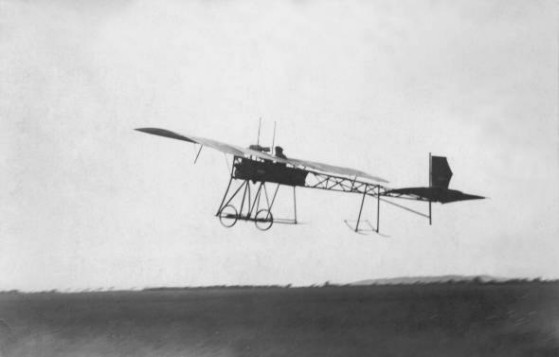 |
| The EDA VI over Merna field, flying at an altitude of 40 meters. It was one of the best prototype |
| The EDA VII is newly a biplane (with the shorter inferior wing). With its construction, in the summer of 1910, the brothers Rusjan exhaust all their financial possibilities. Their savings and those of the father Franc go in the great cauldron of expenses. They ask aids also to France, Austria and Hungary but with q little success. |
 |
|
|
| In August 1910, to a cycling competition, a manufacturer of Zagabria, Mihajlo Mečep, proposes to the Rusjan to put itself in society. The two brothers move themselves to Zagabria with their baggage of enthusiasm and courage. Their dream to create a factory of aircrafts for the commerce seems nearer and realizable hour... |
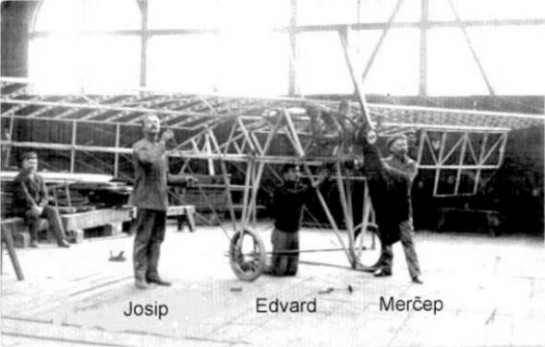 |
| Zagreb workshop. The Rusjan brothers working the first “Merćep-Rusjan” plane (1910) |
 |
| Zagreb, Eduardo and Giuseppe working. After the agreement with Merćep, they had no more financial problems and a large hangar is available for their planes |
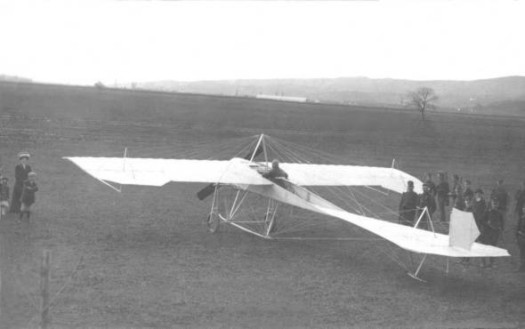 |
| The "Sokol", the first plane carried out in the Zagreb hangar (1910). With a take-off run of only 28 meters (world-wide record), a ceiling of 400 meters and a landing run of 60-70 meters (November 1910) |
 |
| Eduardo before a display flight. Behind the plane an honour piquet (Zagreb, November 1910) |
 |
|
|
| With the September
1910 the two brothers Rusjan begin to Zagabria the construction of airplane
to market in sale. The prototype has a motor "Gnome" from 50 HP and is
ready to half November. It takes off in 28 meters and it is already a record.
Comes organized an advertising tour in all the Balkan Peninsula. Exhibition
to Zagabria and then, in 8 January of 1911, to Belgrade.
That day blow a strong wind of North and the exhibition comes suspended. The day after the climatic conditions are identical but Eduardo Rusjan does not want to disappoint the large public rushed. It is raised in flight, is exhibited in numerous passages on the crowd and of it a wind blast speeds up the enthusiasm and breaks a wing of the aircraft, that it throws down to the feet of the fortress of Kalemegdan sweeping up the pilot, to the confluence of the Sava with the Danube. |
 |
| Beograd, the Sokol airplane crash by Kalemegdan fortress. The left wing collapsed and folded up (January 9th 1911) |
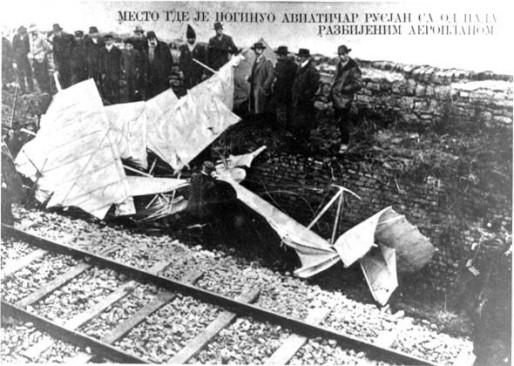 |
| Beograd, by the Kalemegdan fortress: the Sokol’s debris on the railroad. Eduardo shell die on the way to the hospital |
| The accident moved the witnesses and a crowd was present at the obsequies. |
 |
| Eduardo’s solemn funerals in Beograd attended by big crowds (January 1911) |
| From the weekly
magazine Primorski list (Newspaper for the Slovenian population of the
Shoreline that exited in every newspaper stand every Thursdays at 3 o clock
in p.m.) of 12 January 1911 - year XIX, n. 2, second and third page:
Our citizen, the aviator Rusjan, victim of an incident. Monday towards evening has diffused in our city like lightning the news that the parents of Rusjan have received from Belgrade a telegram with the announcement that their son Eduardo is remained victim of an incident during a flight in Belgrade and the fall of it had provoked the death. This news has made a deepest impression to all those who has been some inform to you, without nationality distinctions. The telegrams of today confirm this news. One of this filler: "Monday the aviator Rusjan has organized a test flight from the fortification of Belgrade, but it is hasty from the height of 20 meters on the wall of town-walls of the fortification and after some minutes it is died because of the brought back wounds. Rusjan has taken to the flight with just the monoplane although the strong wind, exceeding the Sava, and is flown with happening from the fortification of Belgrade until the bridge of the distant railroad 1 km. During the return way, a strong wind has seized the airplane throw him to earth. Rusjan that, as it is know, the past year and the year before made in Gorizia numerous tried in order to raise itself in air with the just aerial one, has taken the way of Zagabria, where with the Croatian Merčep it has constructed an aircraft with which it has caught up the first successes of its hard work. To Zagabria its flight has had a great triumph. Later on it had intention to fly to Belgrade, Sofia and Constantinople. It was not destined to realize this tour. The fate has intentional that already in first of these cities has had to leave its young life." "Yesterday before noon they have been carried out to expenses of Commune the funerals of Slovenian aviator Rusjan, than the 9 of this month it is remained victim to of an incident to Belgrade. To the funerals enormous crowd is taken part one. The king Peter for means of a representative, ha Austrian s expressed to the family of the victim its sorrow. Prince Jurij has made to put on the coffin one wonderful crown. The traders of Belgrade have decided to erect a monument on the tomb of the aviator ". Later on the same number of the newspaper brought back short news that placed the accent on the common fate of the three aviators that the people from Gorizia had had way to admire previous year (1910), during the summer. The Austrians Zablatnik (he made to fly Ana Rys Ferlan, the first Austrian women "tourist of the air") and Heim have endured serious incidents falling with the airplane. For Heim the fall from the height of 200 meters has been fatal. The third victim is "our Rusjan". And it concluded "- All three have been victims of the same type of incident. Who could it have imagined?» |
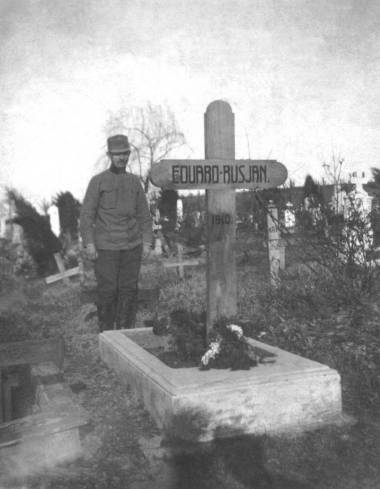 |
| An Austro-Hungarian officer by the Eduardo’s grave in Beograd cemetery (1915) |
| Brother Giuseppe, than did not have intention to fly, will later on construct to others two airplanes in the workshop of Zagabria, but two years after he emigrates in Argentine. For him the century of the technologies already had been concluded. |
*****
| For but greater
part of us, to make a jump in Slovenia is by now a habit very rooting.
The more immediate destination in this part of the region is Nova
Gorica. Perhaps many of us will be stop, just to the centre of the
city, in front of a monument of great dimensions that represents an airplane
(or a bird) with the broken wings. It is the monument that the city of
Nova Gorica has dedicated to Eduardo Rusjan.
From always Eduardo
Rusjan it comes remembered in the technical and historical reviews of Austria,
Yugoslavia and Slovenia. The date of its birth and the anniversary of its
first flight come celebrate with aerial meeting, historical-photographic
ceremonies, expositions and several manifestations
in all the Slovenia and in recent years also in Gorizia. In 1999, in order
to celebrate the 90 years of the first flight, in Salcano an airplane is
passed more times under arched of the stone bridge provoking the enthusiasm
of the crowd.
In 1999 a new aseroid was discovered and it was given the name "Rusjan19633"(see website Jet Propulsion Laboratory-California Institute of techology NASA) and 19633 Rusjan (Wikipedia) The article following have been uncovered in the 1979 from the commander of the Alitalia Fulvio Chianese while it was found to Mc Donald Douglas of Long Beach for the transition on airplane MD 80 that would have brought back it to the airport of Ronchi dei Legionari. |
 |
 |
|
|
|
|
|
|